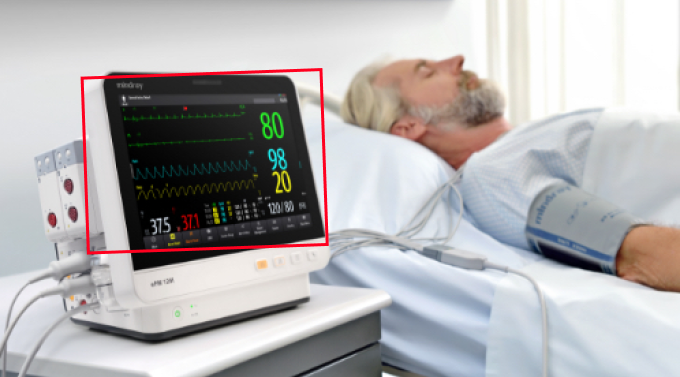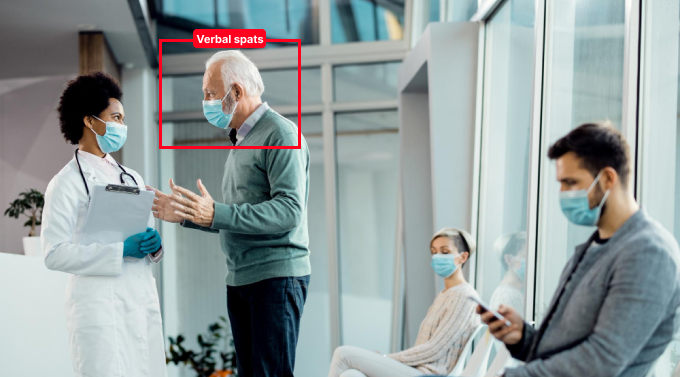Notifications
The integration of AI video analytics in hospital environments represents a significant advancement in enhancing both safety and security. Hospitals are complex institutions that require stringent measures to protect patients, staff, and sensitive medical information. The application of AI-driven video analytics can address numerous challenges within these settings, providing real-time monitoring, predictive insights, and automated responses to potential threats or incidents. We will explores how AI video analytics can revolutionize hospital safety and security, focusing on several key areas: patient safety, staff protection, data security, operational efficiency, and emergency response.

Patient safety is paramount in any healthcare setting. AI video analytics software can significantly improve patient care by monitoring patient behavior and movements. For instance, AI systems can detect if a patient falls out of bed or if there are irregularities in their movements, immediately alerting medical staff to intervene. This is particularly beneficial in wards with high-risk patients, such as the elderly or those with neurological disorders. Moreover, AI can track hygiene practices, ensuring that staff follow proper handwashing protocols, which is crucial in preventing hospital-acquired infections.

Hospital staff face numerous risks, including physical violence and exposure to contagious diseases. AI video analytics can help in mitigating these risks by identifying potential threats early. For example, AI can analyze patterns of behavior to recognize when a person is becoming agitated or aggressive, allowing security personnel to intervene before an incident escalates. Additionally, AI can ensure compliance with personal protective equipment (PPE) protocols by monitoring and flagging any deviations from required safety measures.
Protecting patient data is another critical aspect of hospital security. Unauthorized access to sensitive information can have severe consequences. AI video analytics can enhance data security by monitoring access to restricted areas such as data centers or rooms with sensitive patient records. The AI system can identify unauthorized personnel attempting to gain access and trigger an alert. Moreover, AI can help in verifying the identity of individuals through facial recognition, ensuring that only authorized personnel can access specific areas.
Beyond safety and security, AI video analytics can contribute to the overall operational efficiency of hospitals. By analyzing video feeds, AI can optimize patient flow and reduce bottlenecks in various departments, such as emergency rooms or outpatient clinics. For example, AI can assess the average wait times and patient load in real-time, enabling staff to allocate resources more effectively. Additionally, AI can monitor equipment usage and availability, ensuring that critical medical devices are always ready when needed.
In emergency situations, time is of the essence. AI video analytics can play a crucial role in enhancing the responsiveness of hospital staff during such events. For instance, AI can detect signs of a fire, chemical spill, or other hazardous incidents and immediately notify the relevant personnel. Furthermore, AI can facilitate better coordination during emergencies by tracking the movement and location of patients and staff, ensuring that everyone is accounted for and that evacuation procedures are followed efficiently.
While the benefits of AI video analytics in hospitals are substantial, implementing such systems also comes with challenges and considerations. One major concern is the issue of privacy. Continuous monitoring may raise ethical questions about patient and staff privacy. Hospitals must ensure that AI systems are designed with robust privacy protections, such as anonymizing data and limiting access to authorized personnel only.
Another challenge is the integration of AI systems with existing hospital infrastructure. Hospitals need to invest in compatible hardware and software, which can be costly. Additionally, staff training is essential to ensure that employees understand how to use and respond to AI alerts effectively. Resistance to change is another potential hurdle, as some staff may be apprehensive about relying on AI technology.
The future of AI video analytics in hospitals looks promising, with continuous advancements in AI technologies expected to further enhance their capabilities. Innovations such as improved machine learning algorithms, better data integration, and enhanced predictive analytics will likely lead to even more effective safety and security measures. For example, AI could potentially predict outbreaks of infectious diseases within a hospital by analyzing patterns in patient data and video feeds, enabling preemptive measures to be taken.
Furthermore, the integration of AI with other emerging technologies, such as the Internet of Things (IoT) and wearable devices, could create a more interconnected and responsive healthcare environment. Wearable devices that monitor patients' vital signs could be linked to AI systems, providing real-time health data that can trigger immediate responses to critical health changes.
AI video analytics offers a transformative approach to improving safety and security in hospitals. By providing real-time monitoring, predictive insights, and automated responses, AI can address a wide range of challenges, from patient safety and staff protection to data security and operational efficiency. While there are implementation challenges to consider, the potential benefits of AI video analytics for healthcare safety make it a worthwhile investment for healthcare institutions. As AI technology continues to evolve, its integration into hospital environments will likely become even more seamless and impactful, ultimately leading to safer and more efficient healthcare delivery.